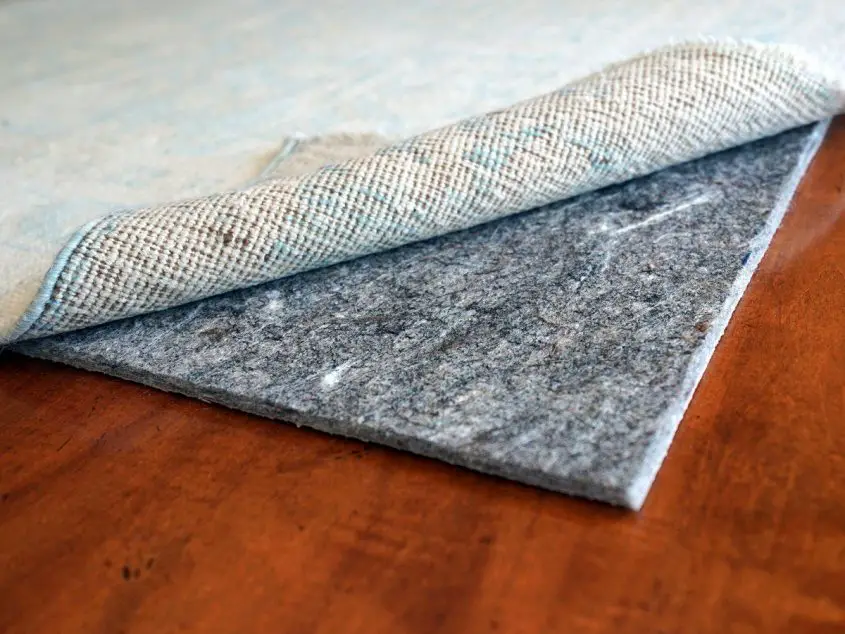Which Side of Foam Rug Pad Goes down

There are a few things to consider when purchasing a foam rug pad, such as thickness and density. But one of the most important factors is which side of the foam rug pad goes down. If you’re not sure which side to use, here are a few tips to help you make the decision.
When it comes to foam rug pads, there is a right and a wrong side. The wrong side is the one that is sticky and rough. This side is meant to go up, against the bottom of your rug.
The right side is smooth and soft. This is the side that should be facing down, against the floor. If you put the pad on upside down, it will not work as well and could potentially damage your floor.
Which Side of the Foam Rug Pad Goes down
Most people don’t think twice about which side of the foam rug pad goes down when they’re setting up their new rug. However, if you’re not careful, you could end up with a less-than-ideal situation. Here’s what you need to know in order to ensure that your foam rug pad is installed correctly.
The first thing to keep in mind is that there are two different types of foam rug pads on the market: those with adhesive backing and those without. If your foam rug pad has an adhesive backing, then it’s important to make sure that the adhesive side is facing down when you install it. This will ensure that the pad stays in place and doesn’t shift around under your feet as you walk on it.
On the other hand, if your foam rug pad doesn’t have an adhesive backing, then it really doesn’t matter which side is facing down. You can install the pad either way and it will still perform its job of cushioning your feet and extending the life of your rug. So if you’re ever unsure about which way to install your foam rug pad, just flip a coin – it really won’t make a difference!
How Do I Install a Foam Rug Pad
If you’re looking to add a little extra cushioning and comfort to your floor, a foam rug pad is a great option. They’re also relatively easy to install, so you can do it yourself in just a few simple steps. First, start by measuring the area where you’ll be placing the rug pad.
You’ll want to cut the pad to size so that it fits snugly under your rug. Next, use a spray adhesive or double-sided tape to attach the pad to the underside of your rug. Make sure that the adhesive is evenly distributed so that the pad doesn’t shift or move around once it’s in place.
Once the adhesive is dry, flip your rug over and place it back in its spot. You should now have a softer, more comfortable surface to walk on. Enjoy!
What are the Benefits of Using a Foam Rug Pad
If you are looking for a rug pad that will provide both comfort and protection for your floor, then a foam rug pad is a great option. Foam rug pads are designed to cushion your feet while you walk on them, and they also help to protect your floor from scratches and scuffs. Here are some of the other benefits of using a foam rug pad:
1. Foam rug pads can prolong the life of your rug by protecting it from wear and tear.
2. Foam rug pads can make your rug more comfortable to walk on, as they provide added cushioning.
3. Foam rug pads can help to protect your floors from scratches and scuffs caused by furniture or foot traffic.
4. Foam rug pads are easy to install and can be cut to fit any size or shape of Rug.
Will a Foam Rug Pad Damage My Floor
Assuming you are talking about a foam rug pad for under an area rug: A common worry is that foam rug pads will damage floors, but this is not the case. In fact, using a foam rug pad can actually help to protect your flooring from scratches and other types of wear and tear.
The key is to choose the right type of foam rug pad for your specific type of flooring. For example, if you have hardwood floors, you’ll want to use a softer, more cushiony foam rug pad so as not to damage the finish on your floors.
Carpet Padding: which side goes up?
Conclusion
In most cases, the foam rug pad will have a different texture on each side. One side is usually smoother than the other. It’s important to put the smooth side down against your flooring because otherwise, it can damage your floors or cause them to become uneven.



